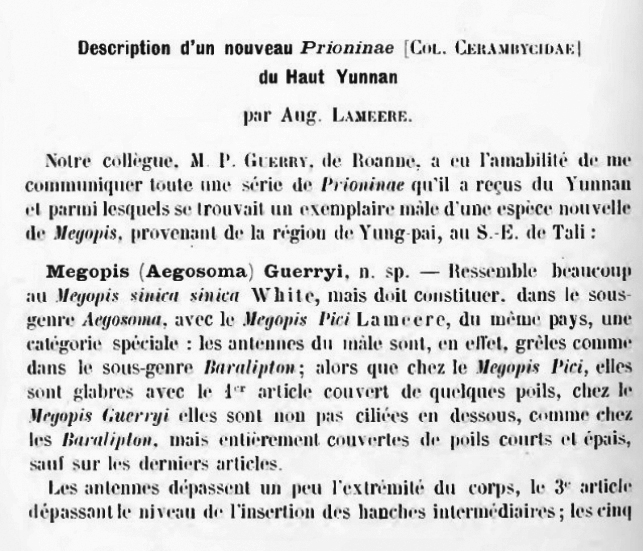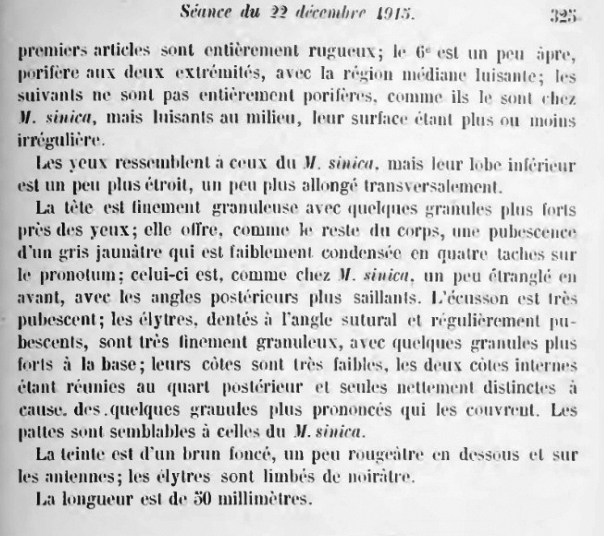| T O P I C R E V I E W |
| Cuong Do |
Posted - 25/06/2013 : 13:24:36
Dear Alls,
Any one of you have a photo of Aegosoma guerryi from Yunnan? Or could you please help to translation the original description of the species in to English,
Thank you so much in advance,
  |
| 2 L A T E S T R E P L I E S (Newest First) |
| Cuong Do |
Posted - 25/06/2013 : 23:26:06
Thank you so much, |
| Francesco |
Posted - 25/06/2013 : 19:29:18
Voilą
Description of a new Prioninae from North Yunnan.
Our colleague, M.P. Guerry from Roanne, had the kindness to send me a long series of Prioninae, which he had received from Yunnan and among which a male specimen of a new Megopis-species coming from Yung-Pai Region (SE from Tali) was present.
Megopis (Aegosoma) Guerryi n. sp.
Very similar to Megopis sinica sinica White, but it should constitute a special group inside the subgenus Aegosoma together with M. pici Lameere from the same country. In fact, the male antennae are thin like the subgenus Baralipton; while they are hairless and with the scape covered by some hairs in M. pici, they are not haired beneath in M. guerryi (like in Baralipton) but entirely covered with short thick hairs, except for the last article.
The antennae overpass the body apex, 3rd article overpassing the mesocoxae; articles 1-5 entirely rugose; 6th a bit adsperate, poriferous at both extremities, with the median region bright; the following ones not entirely poriferous, like in sinica, but bright in the middle, their surface being irregular.
The eyes are similar to those of sinica, but their under lobe is a bit narrower and a bit more transversely enlarged.
The head is finely granulose, with some large granules near the eyes; it is covered - as the rest of the body - with a yellowish gray pubescence, which is condensed forming four spots on the pronotum; this last is, like in sinica - feebly constricted anteriorly, with the posterior angles more raised.
The scutellum is very pubescent; the elytra, toothed at the apex and regularly pubescent, are finely granulose, with some larger granules at the base; their costae are weak, both inner ones being united on the apical fourth and raised only at the base due to some larger granules.
Legs similar to those of sinica.
Colour dark brown, feebly reddish beneath and on the antennae, elytra margined with black.
Body length 50 mm |
|
|


